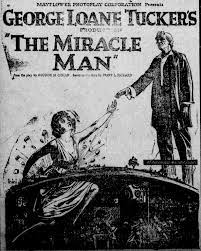January 18, 1920, marks a significant date in the history of cinema with the release of "The Miracle Man," a groundbreaking film directed by George Loane Tucker. This silent drama, based on a play by George M. Cohan, not only captivated audiences with its compelling narrative but also showcased innovative filmmaking techniques that would influence the industry for years to come. "The Miracle Man" is primarily remembered for its exploration of faith, redemption, and the power of belief. The story revolves around a charismatic con artist named Tom Burke, portrayed by Thomas Meighan, who feigns paralysis to deceive unsuspecting believers into thinking he has been miraculously healed. The narrative takes unexpected turns as Tom's interactions with a genuine faith healer, portrayed by Joseph J. Dowling, lead to a series of events that challenge the boundaries between deception and true spirituality. One of the film's standout features was its use of a then-revolutionary special effect: the transformation of actor Lon Chaney's appearance. Chaney, renowned for his transformative abilities and commitment to his roles, underwent a remarkable makeup transformation to depict a disfigured and crippled beggar named "The Frog." This metamorphosis was a testament to the burgeoning art of cinematic makeup and prosthetics, showcasing the potential for actors to undergo radical physical changes for their characters. Released during the transitional period from silent films to "talkies," "The Miracle Man" thrived in the silent era, relying on the power of visual storytelling, expressive acting, and a compelling musical score to engage audiences. The film's success highlighted the potency of silent cinema in conveying complex emotions and intricate narratives without the need for spoken dialogue. Beyond its narrative and technical accomplishments, "The Miracle Man" had a lasting impact on Hollywood and the broader film industry. The film's success paved the way for subsequent works that delved into themes of deception, redemption, and the interplay between spirituality and skepticism. Moreover, Lon Chaney's transformative performance solidified his reputation as one of cinema's early character actors, influencing future generations of performers who sought to fully embody their roles through physical and emotional commitment. While "The Miracle Man" might not be as widely remembered today as some other cinematic classics, its historical significance is undeniable. Released during a time of societal change and evolving filmmaking techniques, the movie stands as a testament to the creative spirit of early filmmakers and their ability to craft compelling stories that resonate with audiences across generations. The film's exploration of faith, morality, and the human condition continues to be a relevant and enduring aspect of its legacy, making January 18, 1920, a notable date in the history of cinema.
18 january 1920 Miracle Man
